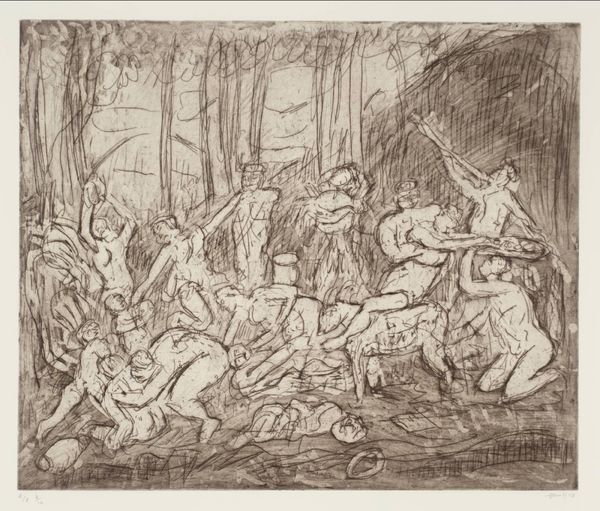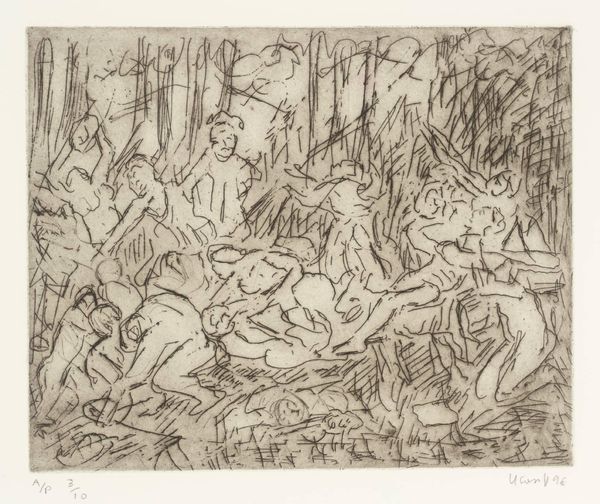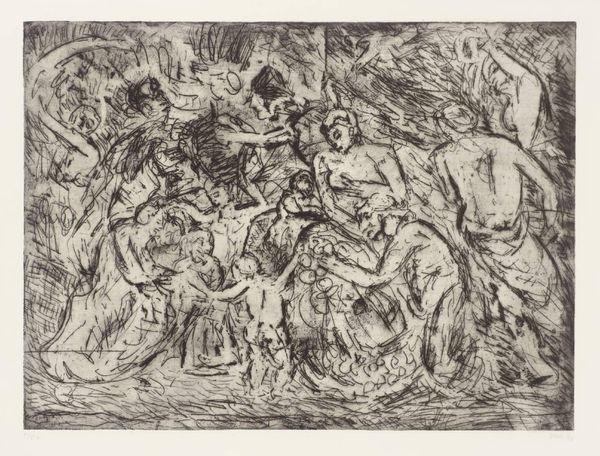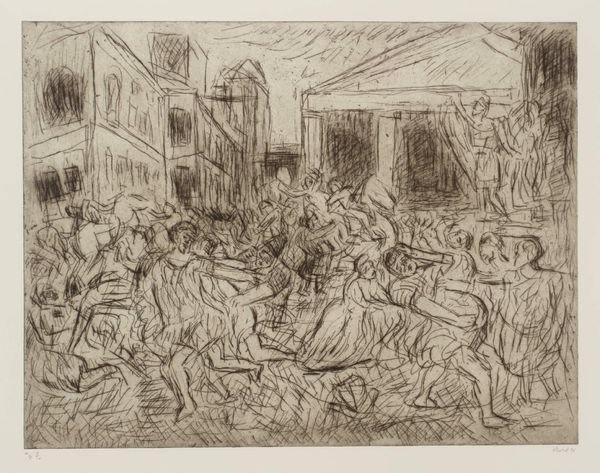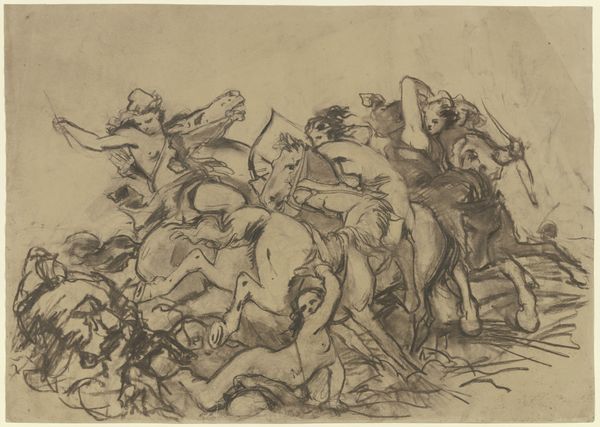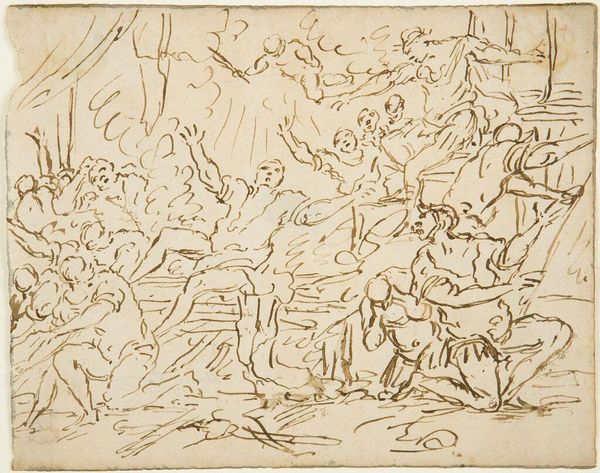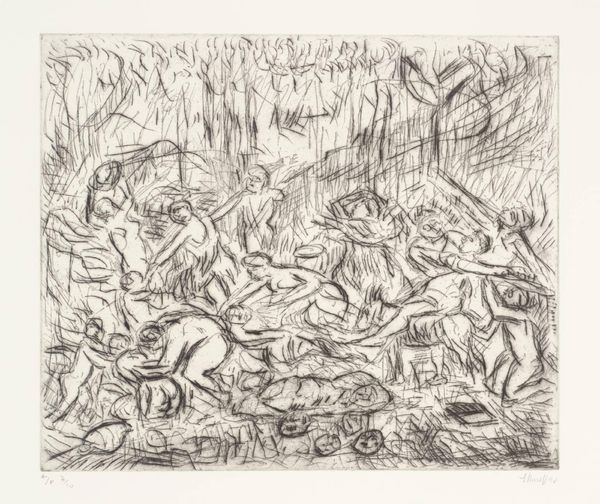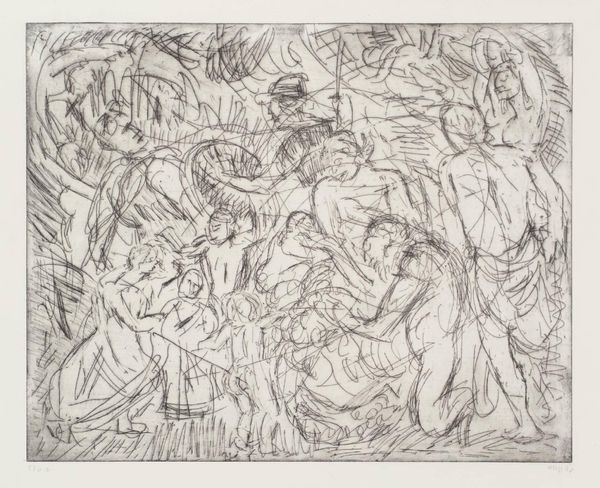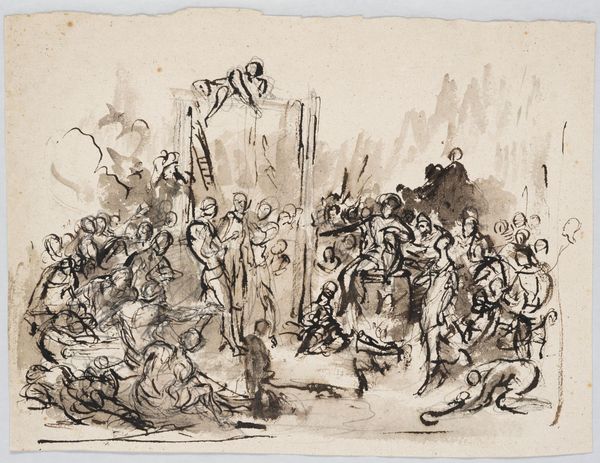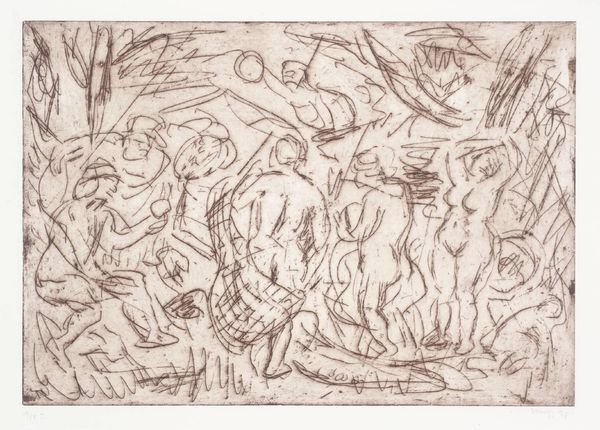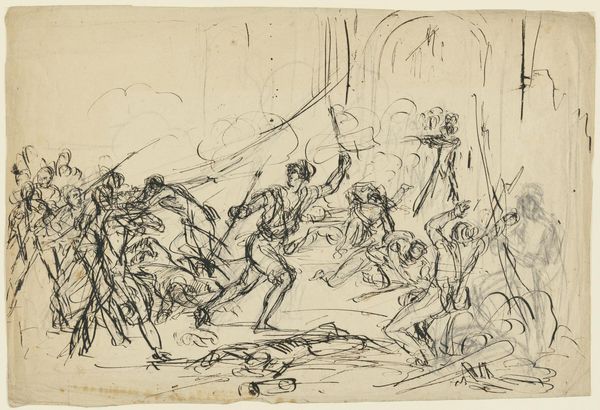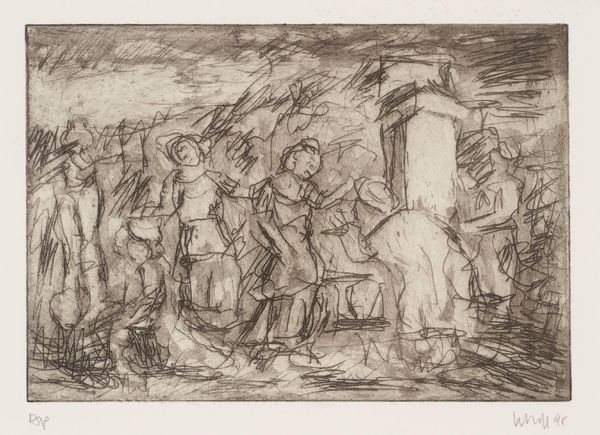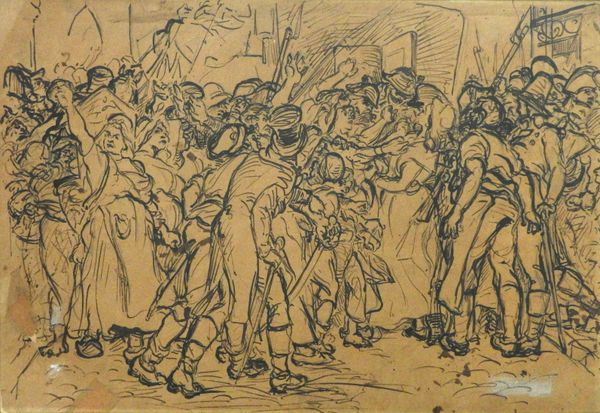
Copyright: © Leon Kossoff | CC-BY-NC-ND 4.0 DEED, Photo: Tate
Curator: Here we have Leon Kossoff's etching, "The Triumph of Pan (4)", now part of the Tate Collections. Editor: My first thought? Chaotic joy. It feels like a wild bacchanal bursting from the frame, like an ancient myth made modern. Curator: Yes, Kossoff often revisited classical themes, filtering them through a distinctly urban lens. The density of the lines and frenetic energy perhaps echo the chaos of city life? Editor: Absolutely, there's a raw, untamed quality here. Look at the figures, so full of unrestrained movement, almost dissolving into the landscape. Curator: And the choice of Pan, a deity associated with nature, sexuality, and, at times, even panic, is telling. It suggests a primal force breaking through the surface. Editor: It's like watching a fever dream unfold, a messy, beautiful explosion of life. Makes you want to join the revelry, or at least run for the hills! Curator: It certainly reminds us of the enduring power of myth and its ability to resonate through the ages. Editor: Indeed, Kossoff has captured something truly timeless in this frenzy of ink.
Comments
tate 8 months ago
⋮
http://www.tate.org.uk/art/artworks/kossoff-the-triumph-of-pan-4-p11733
Join the conversation
Join millions of artists and users on Artera today and experience the ultimate creative platform.
tate 8 months ago
⋮
This print is one of many etchings executed by Leon Kossoff in response to, and literally in the presence of, oil paintings by old masters; in this case The Triumph of Pan, 1635-6, by Nicolas Poussin (1594-1665), owned by the National Gallery, London. Tate owns four prints by Kossoff after this Poussin painting (Tate P11730-3) as well as two prints after a preparatory drawing by Poussin for the same painting (Tate P11734-5). Kossoff’s ability to explore a number of separate responses while making drawings and prints from a single subject is illustrated in these etchings. This version was printed in an edition of twenty with ten artist’s proofs; Tate owns number three of the artist’s proofs.
